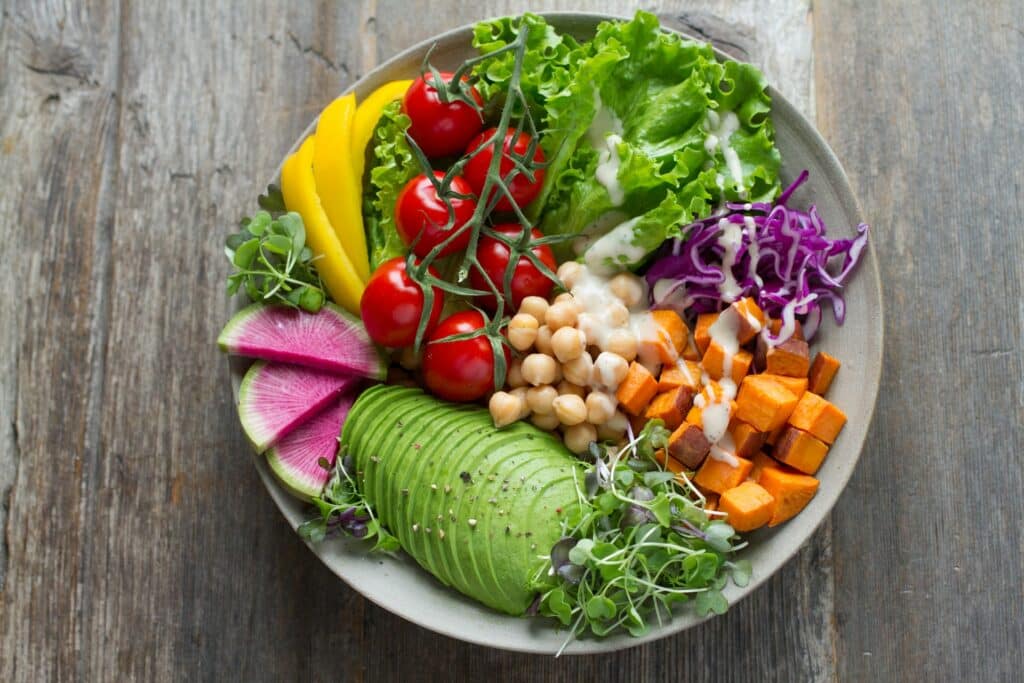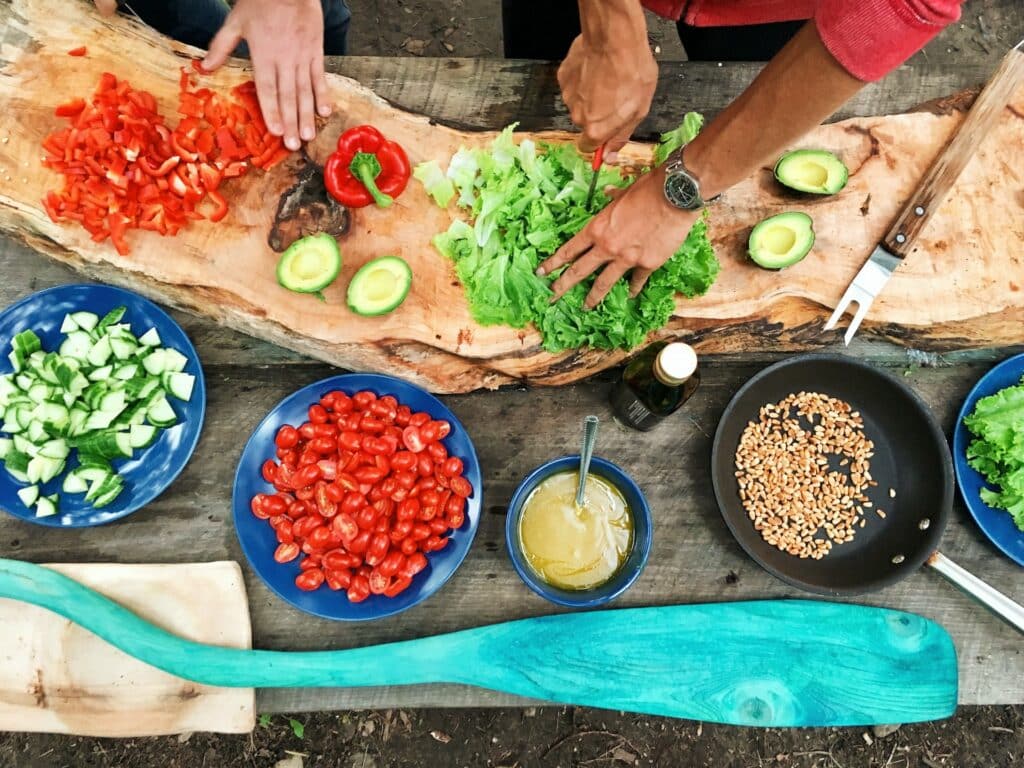Introduction – Fruits And Vegetables For Carbon Reduction
Eating more fruit and vegetables is an easy win win. It’s good for your health and good for your carbon footprint. Eating plants for just one day is a simple way to start and can force a little creativity into your cooking.

Cut Out 0.8 Tons Of CO2 Per Year By Switching To Non-Meat
Eating more plant-based foods can have benefits for your heart, your waistline, and the planet. Today I’ll be looking at one day’s worth of a plant-based diet. First, though, let’s look at some data to show why a plant-based diet is a low-carbon diet. The average American has a food print of about 2.5 tons, but for those who eat a lot of meat, that number goes up to 3.3. Cut out the beef, and it’s down to 1.9. For vegetarians, it’s about 1.7, and for vegans, it’s 1.5. The reason for this is that most plants have very low carbon intensity, whereas meats, cheese, chicken, and beef in particular have very high carbon intensity.
Breakfast – Simple Ideas
Just to show you how easy and delicious it is to eat plants for a day, I thought I’d take you through a quick meal plan I did that took me 20 minutes to rustle up. For breakfast, we’re gonna have Weet-Bix, cornflakes, some granola, and a little bit of fruit, plus some oat milk, which I prefer. For a morning snack, we’ve got a soy latte and a music bar.
Lunch – Simple Ideas

For lunch, we’re gonna get the Turkish option, which is some falafel, hummus, avocado, pizza bread, tomatoes, beetroot, and some chunky for afternoon snack it’s gonna be a green smoothie, which is water, spinach, bananas, and makin dinner we got a stir fry which has some udon noodles, tofu, bok choy, absolute ginger, and for desert we’ve got some mangoes, raspberries. That may take 20 minutes to cook but it won’t take you better join us on day 3 for a food waste feast.
Getting Enough Protein – Consider Nuts
One concern with switching to fruits and vegetables is getting enough protein. In fact, when we say fruits and vegetables we should clarify and say we mean the inclusion of legumes (that encompasses beans), and nuts which are themselves the seeds of fruit. Getting protein from traditional meat sources is quite carbon intensive. It’s ok if you want to have a normal diet – to reduce your carbon footprint just reduce the amount of beef because that has a high carbon emissions of 50 kg CO2 per 100 g of protein. By switching to chicken, you will go down to 5 kg CO2 per 100 g of protein. That’s a 45 kg reduction of CO2 for about three meals worth of protein, assuming about 30 g of protein per meal.
If you opt for a vegetarian meal, then getting your 100 g of protein from nuts would mean a carbon emissions of only 0.3 kg! That’s more than 10-fold less compared to chicken. For more numbers and ideas, check out our article about meat and alternative carbon footprint.
Eating Out
Eating out as a vegan has become much easier in recent years, with more and more restaurants offering vegan-friendly menu options. Many restaurants are now offering vegan options such as vegan burgers, salads, stir-frys, and even vegan desserts.
Additionally, some restaurants can accommodate vegan dietary needs by substituting vegan ingredients for the non-vegan ingredients in their dishes. It is also possible to find vegan-friendly restaurants that specialize in vegan cuisine. Lastly, many grocery stores now carry vegan-friendly products, making it easier to find meals to make at home.
Fast food is a bit of a hit or miss. Occasionally based on reader feedback we create guides for whats available on fast food menus that are vegan as its a bit subtle. We created an Aunt Annie’s Pretzel vegan guide which will surprise you what items are vegan or not. Not all the pretzels are vegan!
Use This Link To Get Back To The Shrink Guide: Introducing the Shrink
Further reading on foodprints and plant based diets:
The carbon footprint of five diets compared
What is a low carbon food?
Foodprints of meat-eaters, fish-eaters, vegetarians and vegans
A Guide to Eating a Plant-Based Diet
What I Discovered When I Went Vegan for 30 Days
Lindsay Wilson
I founded Shrink That Footprint in November 2012, after a long period of research. For many years I have calculated, studied and worked with carbon footprints, and Shrink That Footprint is that interest come to life.
I have an Economics degree from UCL, have previously worked as an energy efficiency analyst at BNEF and continue to work as a strategy consultant at Maneas. I have consulted to numerous clients in energy and finance, as well as the World Economic Forum.
When I’m not crunching carbon footprints you’ll often find me helping my two year old son tend to the tomatoes, salad and peppers growing in our upcycled greenhouse.
